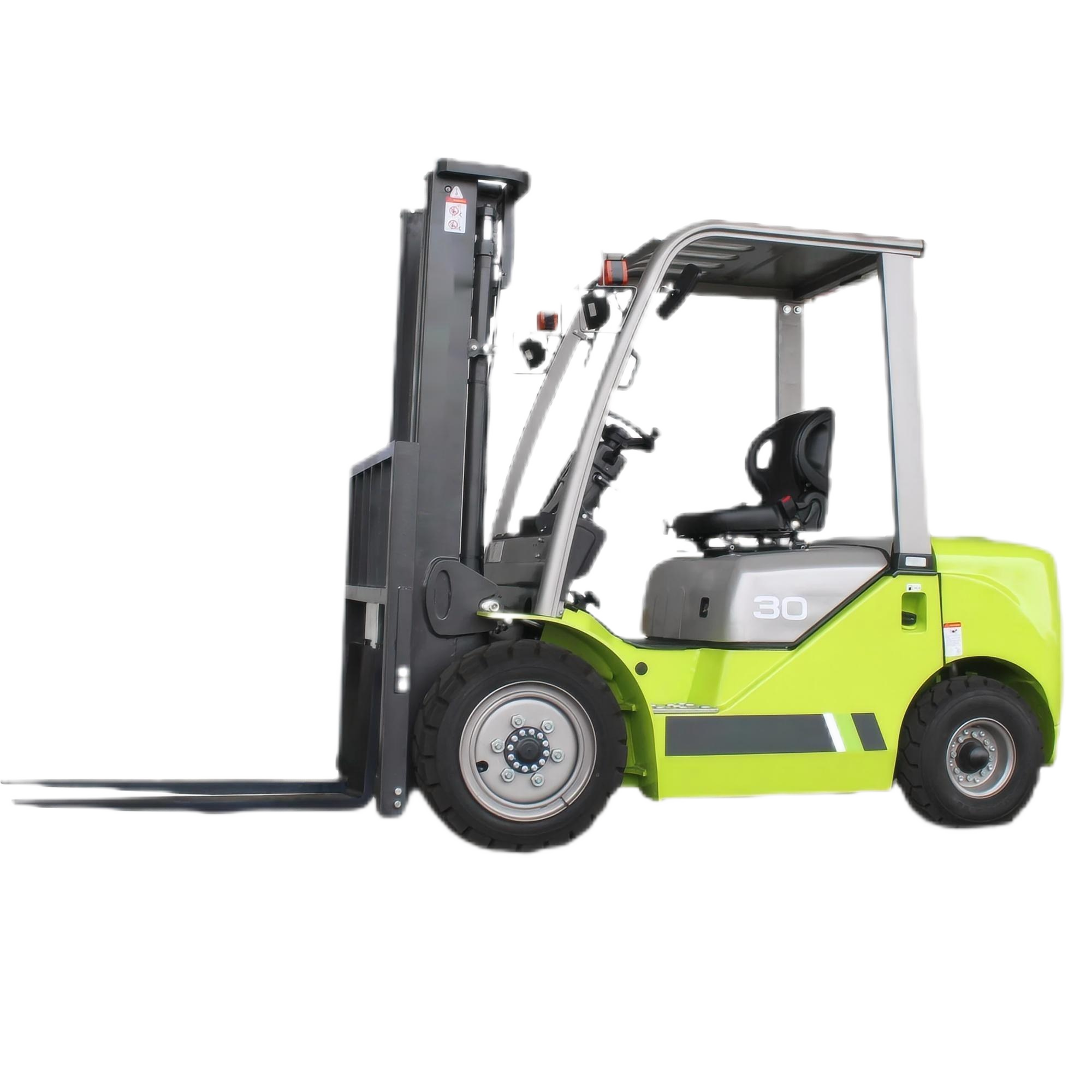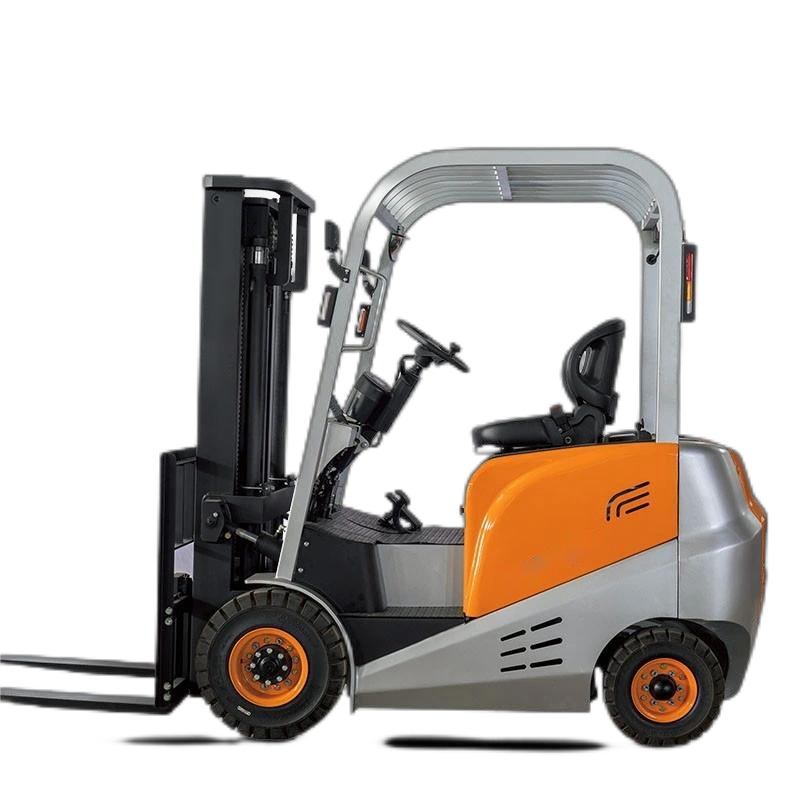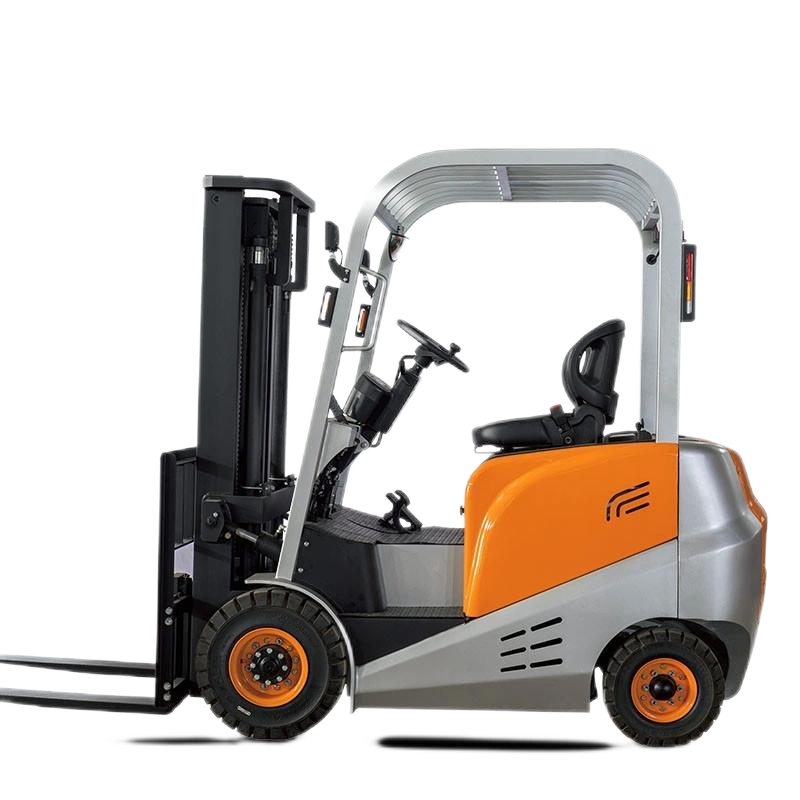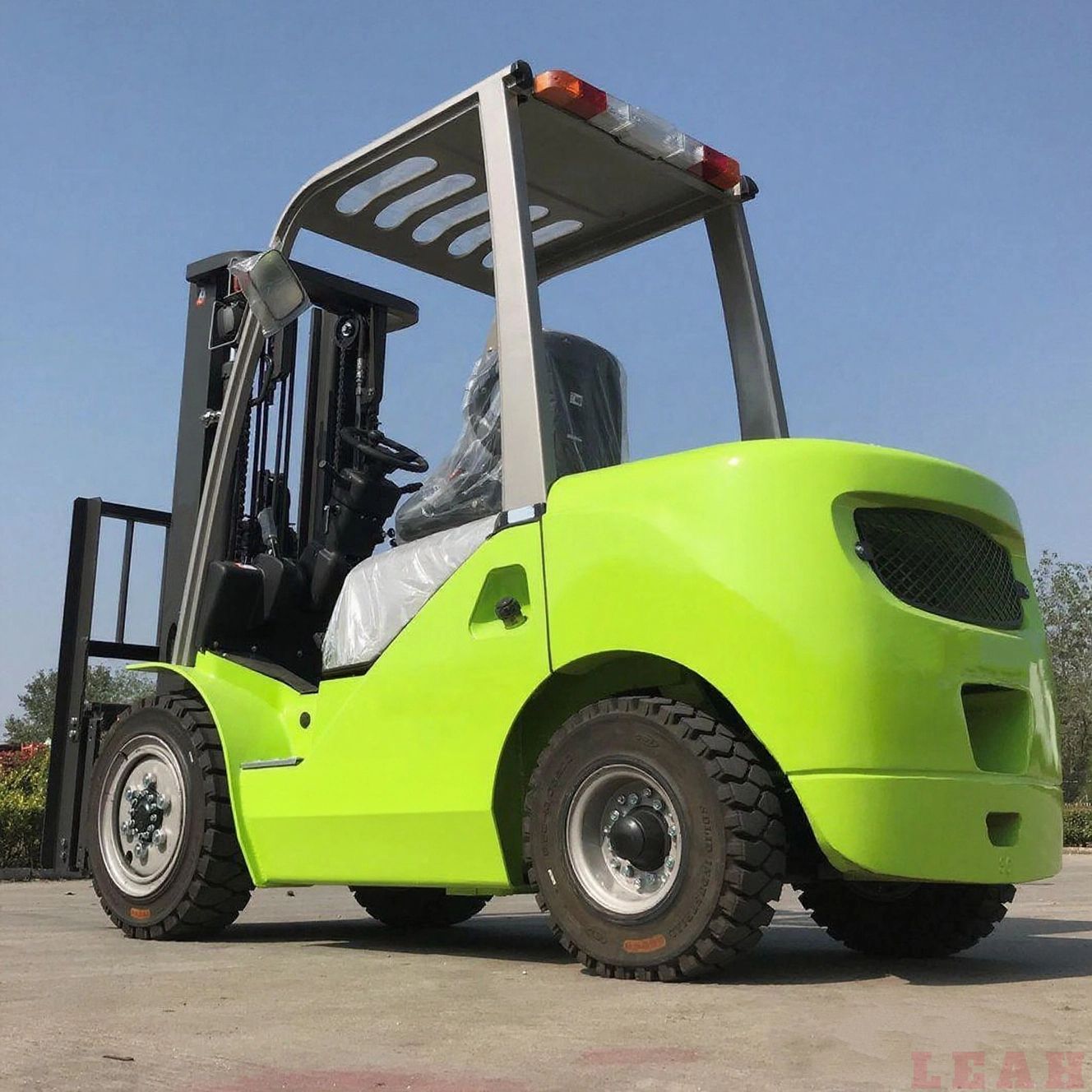The maintenance of electric forklifts is a core link to ensure their safe operation, extend service life, and reduce failure rates. It needs to be systematically carried out from four dimensions—daily inspection, regular maintenance (classified), special maintenance, and fault prediction—based on the characteristics of their "electricity + hydraulics + machinery" composite structure. The specific maintenance plan is as follows:
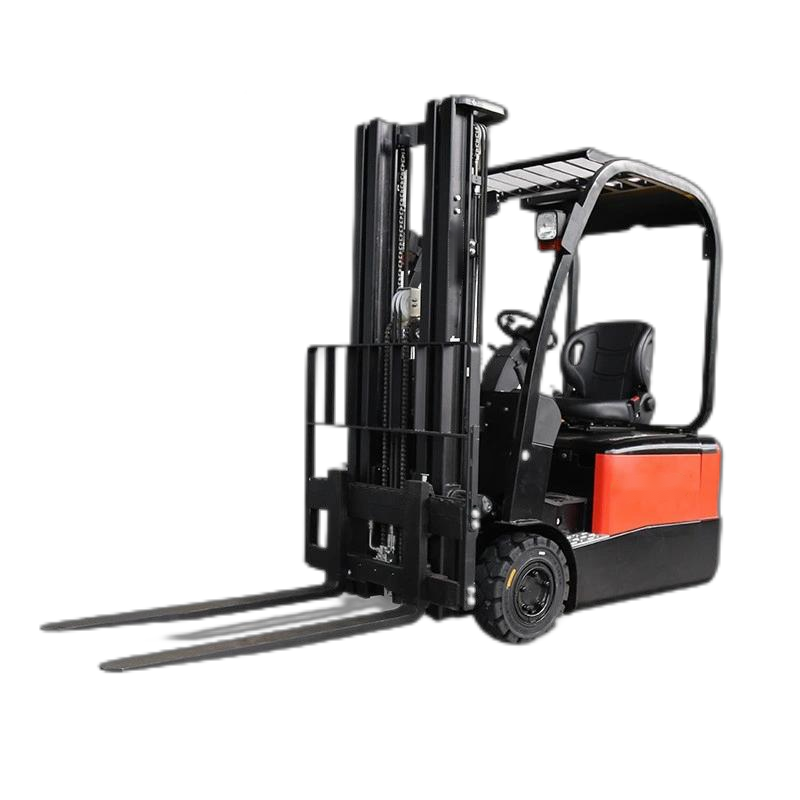
I. Daily Maintenance (Before/After Daily Operation, Led by Operators)
Daily maintenance focuses on "safety inspection + status confirmation". It takes a short time but is crucial, as it can prevent major accidents caused by minor faults. A Daily Inspection Form must be completed for record-keeping.
| Inspection Module | Inspection Item | Standards & Requirements | Abnormal Handling |
|---|---|---|---|
| Power System | Battery Appearance | No cracks or leakage on the shell; no looseness or corrosion on connecting wires/plugs | Immediately stop using if leakage occurs; clean corroded parts with baking soda solution |
| Battery Power Level | Dashboard shows power ≥ 80% (before operation); avoid storage with low power (charge if power < 20%) | Prioritize charging when power is insufficient; prohibit "using while charging" or over-discharging | |
| Motor Status | No abnormal noise (e.g., abnormal sound, jitter) during operation; no overheating on the surface (not hot to touch) | Stop operation if abnormal noise/overheating occurs; contact maintenance personnel to inspect bearings and windings | |
| Working Device | Forks/Mast | No deformation or cracks on forks; no severe wear on fork tips; mast lifts/tilts smoothly | Correct deformed forks; check chain tightness or cylinder oil leakage if mast jams |
| Hydraulic System | No hydraulic oil leakage (cylinders, oil pipes, joints); oil level within the scale line | Replace seals if leakage occurs; add hydraulic oil of the same model (e.g., L-HM46) if oil level is insufficient | |
| Lifting Chain | No breakage or jamming; well-lubricated (oil film on surface, no rust) | Apply special chain lubricant if the chain is dry; immediately stop using if the chain breaks | |
| Chassis & Safety | Braking System | Service brake: Forklift decelerates smoothly without "uneven braking" when pedal is pressed; Parking brake: Forklift does not roll when engaged | Check brake pad wear if braking is weak (replace if thickness < 3mm); adjust brake clearance |
| Steering System | Steering wheel operates smoothly without jamming or deviation; automatically returns to center after steering | Check steering hydraulic oil if jamming occurs; adjust steering tie rods or tire pressure if deviation occurs | |
| Tires | No bulges or cracks on tires; tread pattern depth ≥ 1.6mm (inflated tire pressure complies with instructions) | Replace tires if bulges/cracks exist; inflate in time if pressure is insufficient (avoid overloading to prevent tire damage) | |
| Electrical & Safety Devices | Instruments & Lights | Dashboard displays normally (no fault codes); headlights, turn signals, brake lights, and warning lights illuminate normally | Troubleshoot fault codes with the manual; check fuses or bulbs if lights fail to work |
| Emergency Devices | Emergency stop button: Power is cut off immediately when pressed; no deformation of overhead guard/guardrail | Repair the emergency button immediately if it fails; correct the deformed overhead guard (to ensure impact resistance) |
II. Regular Maintenance (Implemented by Cycle, Led by Maintenance Personnel)
Regular maintenance is divided into weekly, monthly, quarterly, and annual maintenance based on the forklift's usage frequency (e.g., 4h/8h daily operation) and the manufacturer's manual. It focuses on addressing "deep-seated wear that cannot be detected in daily inspections".
1. Weekly Maintenance (Core: Lubrication + Basic Electrical Inspection)
- Lubrication System: Apply special grease (e.g., lithium-based grease) to moving parts such as mast rollers, tilt hinges, steering knuckles, and chains to avoid component wear caused by dry friction.
- Electrical Connections: Check if battery terminals are loose (tighten with a wrench) and clean oxides on terminals (polish with sandpaper) to prevent insufficient power supply to the motor due to poor contact.
- Hydraulic Filter: Inspect the suction filter of the hydraulic oil tank. If there is a lot of debris (e.g., metal shavings, dust) on the surface, blow it clean in reverse with compressed air (avoid direct disassembly to prevent contamination).
2. Monthly Maintenance (Core: Deep Cleaning + Parameter Calibration)
- Battery Maintenance:
- Lead-acid batteries: Add distilled water until the "liquid level is 10-15mm above the plates" (tap water/electrolyte is prohibited). Rinse the battery surface with clean water after charging to prevent acid corrosion.
- Lithium-ion batteries: Check if the BMS (Battery Management System) reports errors. Use professional equipment to test the voltage of individual battery cells (deviation ≤ 0.05V) to avoid shortened service life due to uneven cell performance.
- Motor & Controller: Open the controller housing, clean internal dust with compressed air (pressure ≤ 0.4MPa) to prevent overheating caused by dust accumulation, and check if the wiring of the IGBT module is secure.
- Braking System: Dismantle and inspect the service brake, measure the thickness of brake pads (shoe thickness of drum brakes ≥ 5mm, disc brake pad thickness ≥ 3mm). Replace if wear exceeds the limit, and clean oil stains on the surface of brake drums/discs.
3. Quarterly Maintenance (Core: Component Wear Detection + System Performance Testing)
- Working Device Accuracy:
- Measure mast verticality (deviation ≤ 1.5mm/m). Adjust the connecting pin of the tilt cylinder if tilting occurs.
- Check if the fork positioning pin is loose and if the fork spacing meets standards (generally 1/2-2/3 of the cargo width) to prevent cargo deviation.
- Transmission System: Check the gear oil level of the drive axle (oil level should be in the middle of the oil gauge scale). Replace the gear oil (model as required by the manual, e.g., GL-5 85W-90) if the oil is turbid or contains metal shavings.
- Hydraulic System: Test the hydraulic system pressure (connect a pressure gauge to the cylinder interface). The lifting pressure should comply with the manual (e.g., 30MPa). If the pressure is insufficient, check for hydraulic pump wear or relief valve faults.
4. Annual Maintenance (Core: Comprehensive Dismantling + Safety Performance Evaluation)
- Dismantling Inspection of Key Components:
- Motor: Dismantle the motor, check the insulation resistance of the stator winding (measure with a megohmmeter, insulation resistance ≥ 0.5MΩ). Dry or rewind if insulation is poor.
- Hydraulic Pump/Cylinder: Dismantle and inspect the hydraulic pump, check the wear of vanes/plungers, and replace aged seals (e.g., O-rings, oil seals). Check for scratches on the inner wall of the cylinder; honing is required for repair if scratches exist.
- Calibration of Safety Devices:
- Load Sensor: Calibrate with standard weights (e.g., 100%, 110% of the rated load) to ensure the alarm is triggered normally when overloaded.
- Height Limit Switch: Test whether the limit switch cuts off the power of the lifting motor when the fork is lifted to the maximum height to prevent mast damage due to overloading.
- Whole-Machine Performance Test: Conduct no-load/loaded driving tests (500m loaded driving). Check if the driving speed, steering flexibility, and braking distance (no-load braking distance ≤ 3m, loaded ≤ 4m) meet standards.
III. Special Maintenance (For Special Working Conditions or Components)
Maintenance in Rainy Season/Humid Environment
- Electrical System: Apply anti-rust agent to battery terminals and controller interfaces to prevent short circuits caused by moisture.
- Chassis: Spray anti-rust paint on the chassis after cleaning (focus on frame welds and counterweight connection parts) to avoid steel corrosion caused by rainwater.
Maintenance in Low-Temperature Environment (< 0℃)
- Hydraulic Oil: Replace with low-temperature hydraulic oil (e.g., L-HV46) to prevent mast lifting jams caused by oil solidification.
- Battery: Charge lead-acid batteries indoors (ambient temperature 5-30℃) to avoid reduced charging efficiency due to low temperatures (charging time increases by 2-3 times).
Maintenance for Long-Term Storage (> 1 Month)
- Battery: Store lead-acid batteries after fully charging (power ≥ 90) and recharge them once a month; keep lithium-ion batteries at 50%-70% power, and avoid storage with full or low power.
- Mechanical Components: Lower the forks to the lowest position, tilt the mast backward, and apply anti-rust grease to the surface of forks and masts; inflate tires to 110% of the rated pressure to prevent deformation caused by long-term pressure.
IV. Common Fault Troubleshooting and Maintenance Taboos
1. High-Frequency Fault Handling (Quick Location + Resolution)
| Fault Phenomenon | Possible Causes | Maintenance Plan |
|---|---|---|
| Weak Lifting/Inability to Lift | 1. Insufficient hydraulic oil; 2. Hydraulic pump wear; 3. Low relief valve pressure | 1. Add hydraulic oil; 2. Check the pump's oil output and replace if worn; 3. Adjust the relief valve pressure to the standard value |
| Driving Deviation | 1. Uneven air pressure in left and right tires; 2. Speed difference between drive motors; 3. Deformed steering tie rods | 1. Standardize tire pressure; 2. Test motor current and repair the controller if the difference is large; 3. Correct the steering tie rods |
| Sudden Drop in Battery Endurance | 1. Sulfation of lead-acid battery plates; 2. Damaged individual lithium-ion battery cells; 3. Circuit leakage | 1. Repair with desulfurization equipment; 2. Replace damaged cells; 3. Test circuit insulation with a multimeter to eliminate leakage |
2. Maintenance Taboos (To Avoid Man-Made Damage)
- It is forbidden to directly wash the operator cab/controller with a high-pressure water gun (to prevent electrical short circuits); use a damp cloth for cleaning.
- It is forbidden to disassemble battery terminals without cutting off the power (to prevent arc burns or BMS damage); the main switch must be turned off first.
- It is forbidden to mix hydraulic oil/gear oil of different models (e.g., mixing mineral oil and synthetic oil will cause oil deterioration).
- It is forbidden to operate with overloading (long-term overloading will cause mast deformation and motor burnout due to overloading); strictly operate according to the rated load.
Through the above systematic maintenance process, the service life of electric forklifts can be extended by 30%-50%, and the probability of sudden failures can be reduced by more than 80%, ensuring operational safety and efficiency. In actual operation, the maintenance frequency should be adjusted based on the forklift's service life and working environment (e.g., cold storage, dusty workshop), and a Maintenance Record File should be kept to facilitate tracing the wear pattern of components.





